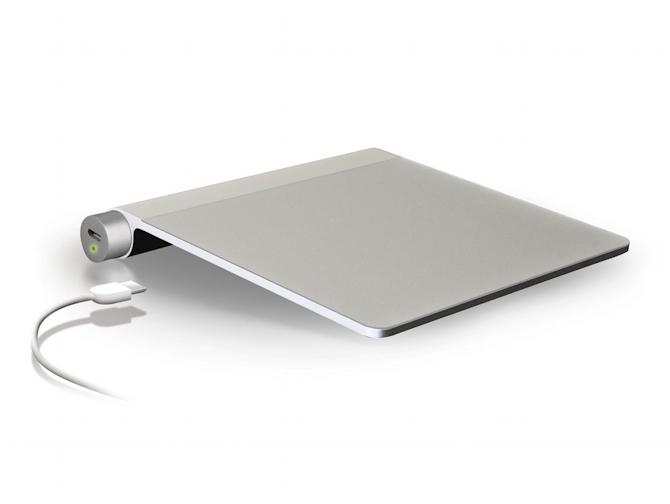I used to hate trackpads, and with my first portable Mac, and iBook G4, I usually carried a USB mouse with me and used that instead of the built-in trackpad.
But Apple’s switch to multitouch trackpads makes them so much more functional that when I got a MacBook Pro a few years back, I finally ditched the mouse.
When the time came to upgrade my family’s Mac, I decided to replace the mouse with an Apple Magic Trackpad. It works very well, and my only complaint is that it’s only available in a battery-powered Bluetooth version. I know Apple seems to love cordless keyboards, mice, and trackpads, and of course I like them too. But I hate the dependence on batteries. I’d rather have a corded USB trackpad, if only Apple would sell me one.
Fortunately, my problem has been solved by mobee technology Power Bar. It’s a cylindrical battery pack with a built-in USB powered charger that fits into the battery compartment of the Magic Trackpad. It looks like this:
Installation couldn’t be easier. You simply unscrew the Magic Trackpad batter cover (which you will no longer need) remove the existing batteries, and pop in the Power Bar. It’s threaded at one end so it screws in just like the original battery cover. There’s a micro-USB port on the end. You use the included USB cable to plug it in, and let it charge.
In theory you can unplug it when you’re using it, but I just leave mine plugged in all the time. The picture below shows how it looks at the business end. (Note that the green LED lights up when it’s plugged in to show that it’s charging.)
The mobee Power Bar is available for $32 (with free shipping) from Amazon.

